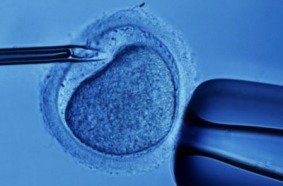In Vitro Fertilization

Every year in the United States, there are sixty million women between the childbearing ages of 15-44. Six million of these women deal with infertility, or the inability of having children (American Pregnancy Association). With the many inventions and innovations available today, there are several alternatives to natural child bearing. One such alternative is known as in vitro fertilization with in vitro meaning inside glass. The process of in vitro fertilization, or IVF, starts when a woman is given a course of hormone treatments to cause her ovaries to produce multiple eggs. The eggs are surgically removed prior to ovulation and then mixed outside the body with a man's sperm to become fertilized. Once fertilized, the eggs now know as embryos, are placed back into the woman's uterus to grow. Babies born with this process are often known as test tube babies. Although in vitro fertilization can help families who have problems with infertility, there should be more caution and regulation for women undergoing this process. In fully understanding the process of IVF, it is important to know the history, advantages and disadvantages and a real life case that went wrong.
